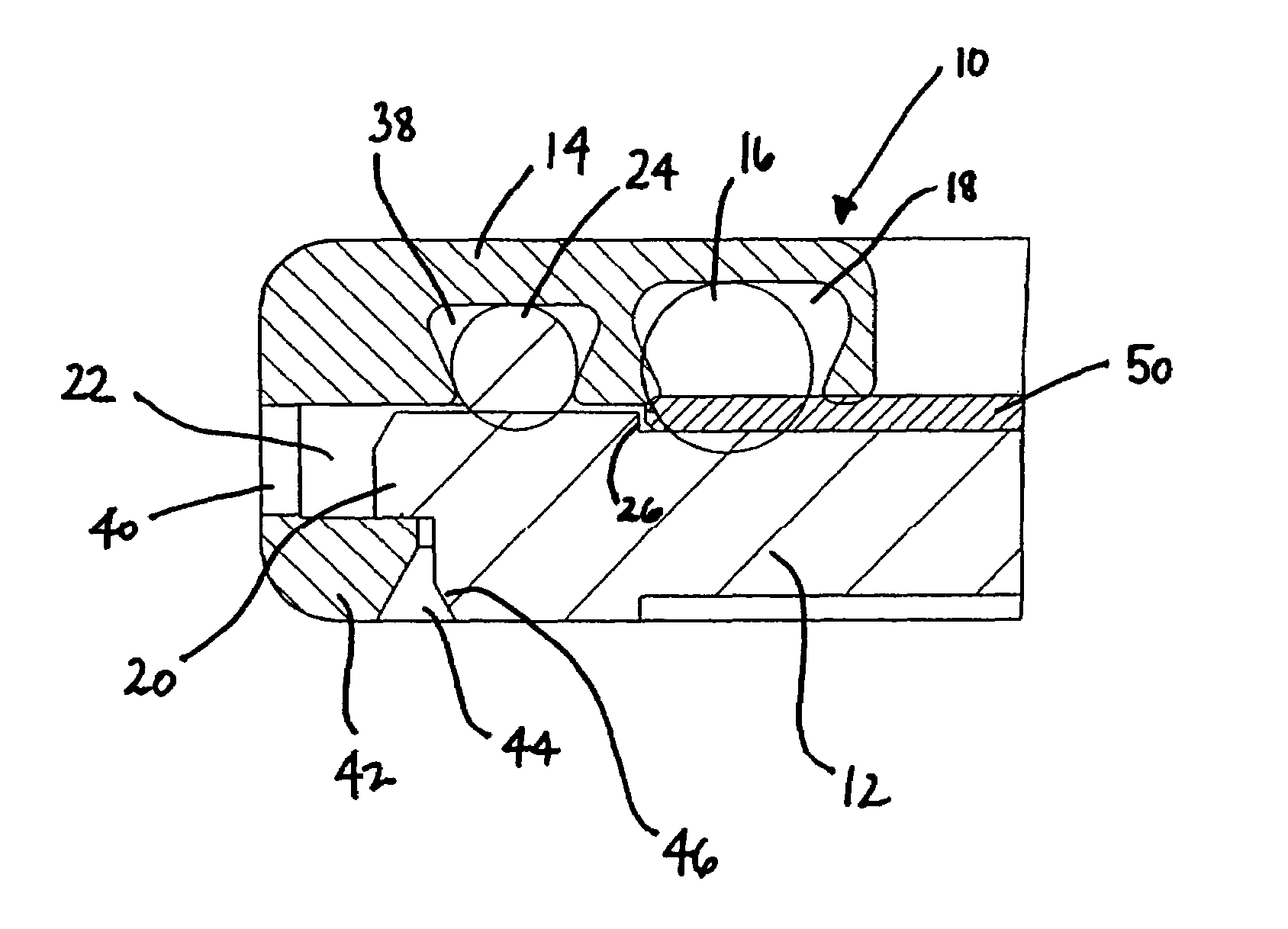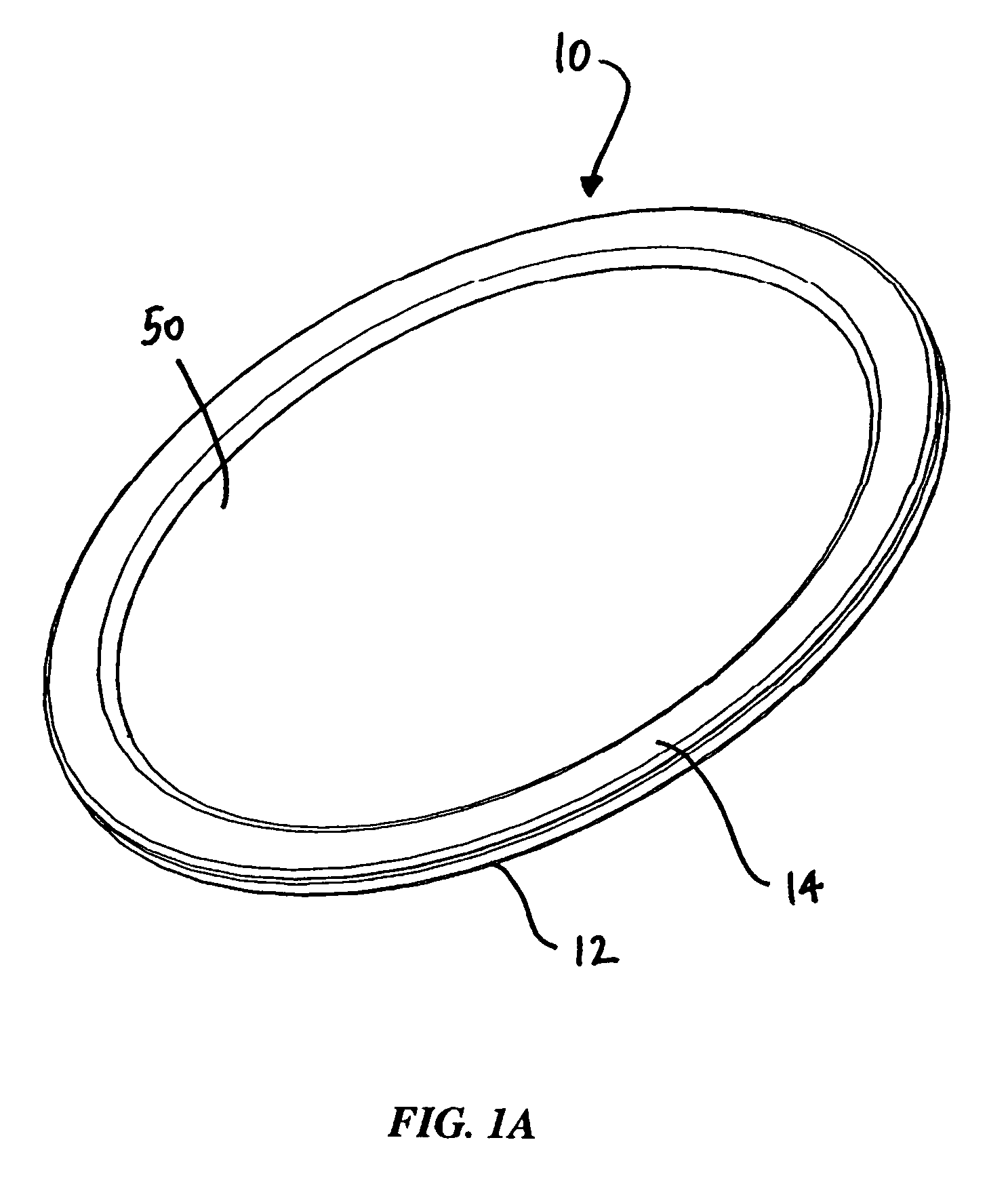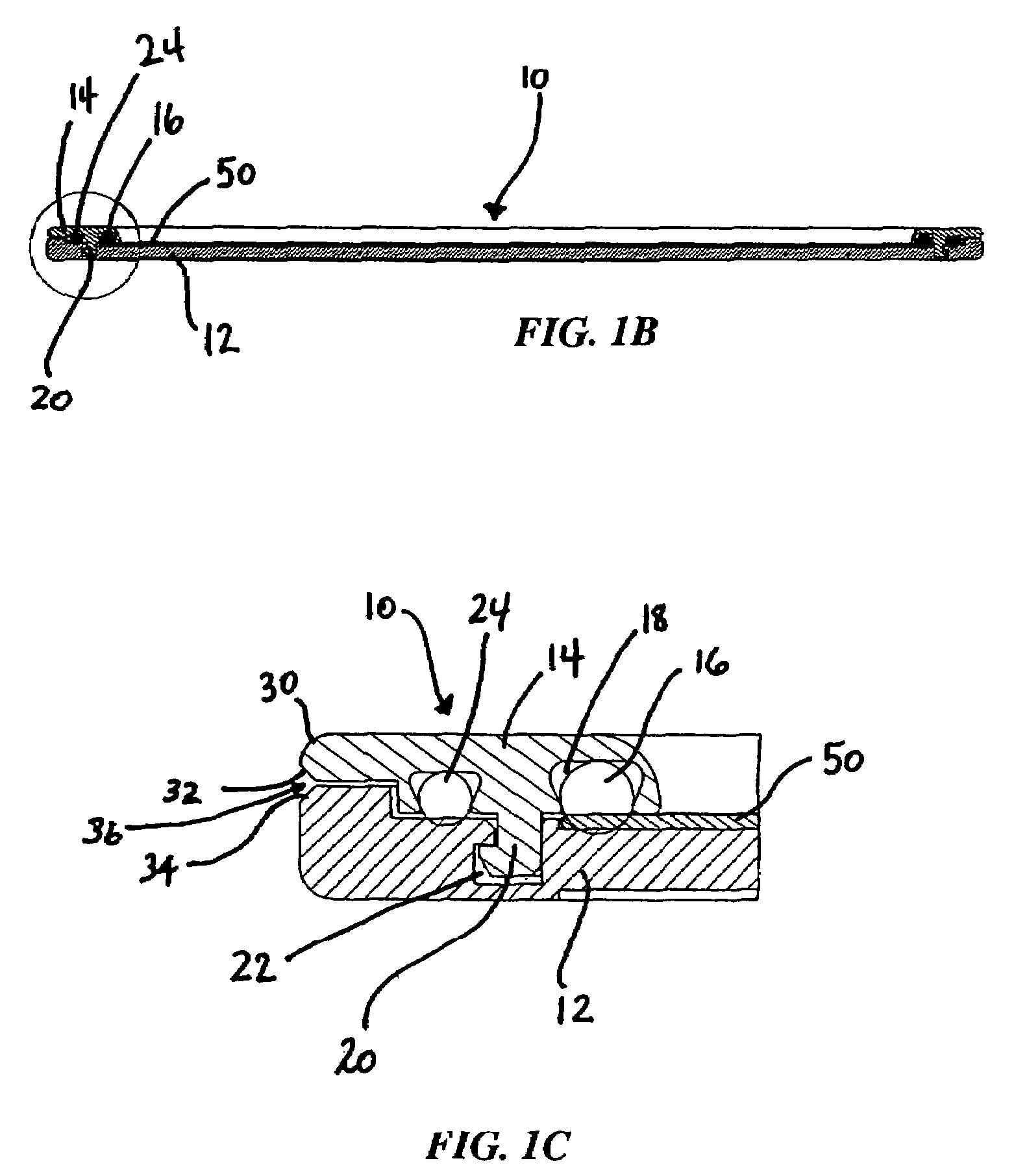Semiconductor workpiece
a technology of semiconductor workpieces and workpieces, applied in the direction of water setting substance layered products, synthetic resin layered products, transportation and packaging, etc., can solve the problems of icds operating at extremely high speeds, prone to heat generation, and conventional back grinding processes have drawbacks, etc., to improve product structure, less susceptible to breakage, and resistant to bowing and warping
- Summary
- Abstract
- Description
- Claims
- Application Information
AI Technical Summary
Benefits of technology
Problems solved by technology
Method used
Image
Examples
Embodiment Construction
[0034]With reference to FIGS. 1A-1E, there is shown a chuck 10 for supporting a semiconductor workpiece 50 during processing in accordance with one embodiment of the present invention. The chuck 10 is comprised of a supporting body 12, a retainer 14 and a sealing members 16, 24. The retainer 14 has two grooves or recesses 18. The sealing members 16, 24 are housed in the annular grooves 18, respectively. The retainer 14 is preferably in the form of a ring and is removeably attached to the supporting body 12. In use, the workpiece 50, which has a device side 51, a bevel (i.e., peripheral edge) 52 and a back side 53, is placed onto a supporting surface 18 of the supporting body 12 of chuck 50, device side 51 down. The retainer 14 is then attached to the outer periphery of the supporting body 12. As shown specifically in FIG. 1C, when the retainer 14 is engaged to the supporting body 12, the retainer 14 wraps around the outer end of the supporting body 12 and covers a peripheral portion...
PUM
| Property | Measurement | Unit |
|---|---|---|
| thickness | aaaaa | aaaaa |
| thickness | aaaaa | aaaaa |
| thickness | aaaaa | aaaaa |
Abstract
Description
Claims
Application Information
 Login to View More
Login to View More - R&D
- Intellectual Property
- Life Sciences
- Materials
- Tech Scout
- Unparalleled Data Quality
- Higher Quality Content
- 60% Fewer Hallucinations
Browse by: Latest US Patents, China's latest patents, Technical Efficacy Thesaurus, Application Domain, Technology Topic, Popular Technical Reports.
© 2025 PatSnap. All rights reserved.Legal|Privacy policy|Modern Slavery Act Transparency Statement|Sitemap|About US| Contact US: help@patsnap.com



